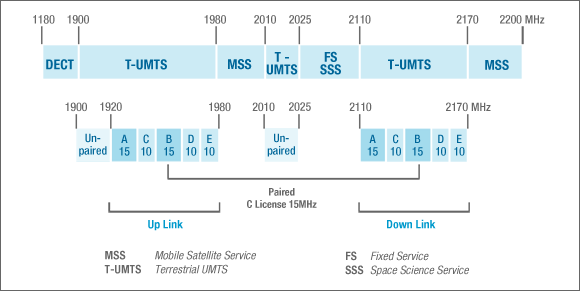Cell phones were originally developed as mobile communication devices for business purposes. With the development of technologies they became more popular and nowadays it is hard for anyone to imagine life without cell phones, and United Kingdom is not an exception. While there are many different frequencies and technologies used in the world of mobile communications, not all of them are used in UK. So let me explicate all things one after another.
There are four main cell phone operators in United Kingdom which use two GSM frequency bands as their main ones and 3G band for additional services:
- O2 uses GSM900 and GSM1800 for communications, 2100MHz as 3G band
- T-Mobile uses GSM1800 as cell phone band and 2100MHz for 3G services
- Vodafone uses GSM900, GSM1800 and 2100MHz, just like O2
- Orange uses GSM 1800 and 2100MHz, like T-Mobile does
Apart from those famous national UK mobile service operators there are also regional companies:
- Sure, that belongs to Cable & Wireless and operates at Jersey, Isle of Man and Guernsey (they were formerly known as States Telecommunications) – mobile phone and 3G communications
- Manx Telecom that operates at Isle of Man – cell phone and 3G services
- Three that belongs to Hutchison 3G Limited – 3G network operator that works in most parts of UK
And now let’s look closer at every frequency band used in United Kingdom.
GSM900
This frequency range is commonly used by many European countries for mobile phone communications. This band uses 880-915MHz to send signals from mobile phone to cell phone tower (uplink) and 925-960MHz to transmit signal from mobile phone tower to cell phone (downlink). The duplex spacing used for this frequency band is 45MHz. Maximum distance from cell phone tower to your mobile phone within GSM900 standard is 35 kilometers.
GSM1800
This frequency range is even more popular in United Kingdom than GSM900, and it is also called DCS. It is also used in most European countries to provide cell phone network communications. To transmit signal from cell phone to base tower this band uses 1710-1785MHz and to send signals from tower to mobile phone it uses 1805-1880MHz frequencies. The duplex spacing of this frequency range is 95MHz.
2100MHz
This frequency band is used by UK mobile communication providers for 3G services. In general, it is also known as UMTS and is used for third generation communications in all parts of the world. This band uses 1920-1980MHz as an uplink signal from mobile devices to the tower and 2110-2170MHz as the downlink signal from tower to mobile phones and gadgets. It also has additional frequency range of 1900-1920MHz used as Time Division Duplex (TDD) signal. 3G works within 8 kilometers from the base tower.

4G
As for 4G frequency band, Ofcom recently announced plans to make an auction of 4G spectrum for mobile communication operators to be able to provide these modern services to their customers. Technologies like WiMAX and LTE would probably be used in addition. It is already confirmed that 800MHz and 2600MHz frequency bands will be auctioned for sure. It is expected that this auction will come to a close at the beginning of 2013, and until the middle of the next year 4G network will be fully rolled out in UK.
Everything Everywhere (T-Mobile and Orange) is already interested in Ofcom’s auction and in bringing 4G technology to their subscribers, though they also wish to use their own GSM1800 band for 4G communications. O2 is also interested in 4G yet they have some technical and legislative disagreements with Ofcom. Vodafone remains silent on this matter.
Bottom Line
United Kingdom has four main mobile telecommunications operators – O2, T-Mobile, Orange and Vodafone, and in addition few regional mobile service and communication network providers. They use GSM900, GSM1800 and 2100MHz frequency bands for cell phone communications of 2G and 3G level. Most of them are planning to provide 4G services starting from middle of 2013, so if you live in UK or planning to visit it – get ready to use 4G-enabled devices.
Prev : Germany
Next : United States



